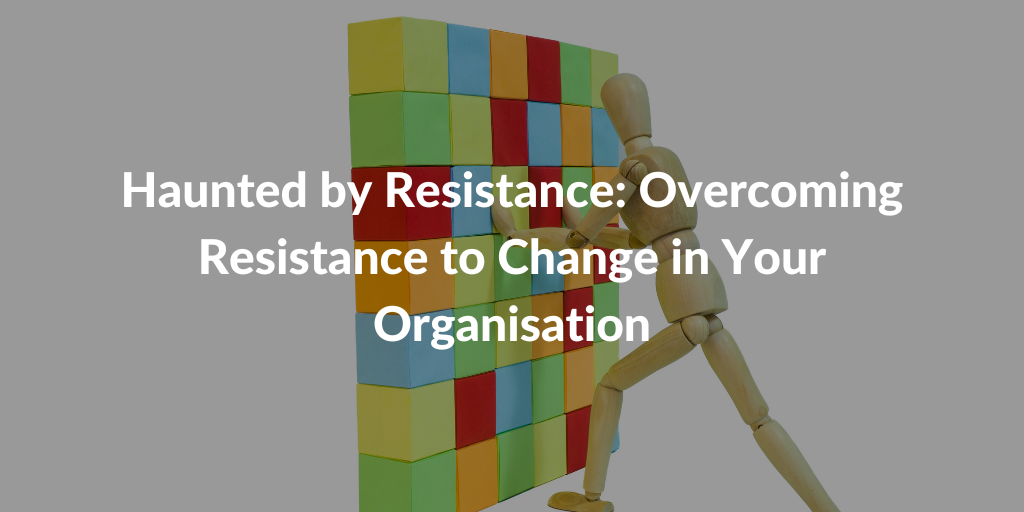Categories
Tags
Newsletter
Subscribe to the QRP International neswletter and get all the news on trends, useful contents and invitations to our upcoming events
Subscribe
However you put it, every change has its resistance. As human beings, we are conditioned to prefer stability and safety over change and disruption. These reactions to stress derive from our primal instincts of ‘fight or flight’ as a default survival mechanism. Any change, including organisational change, never happens in a vacuum. It has an effect on all those involved and where it encounters friction, it will slow and eventually stop.
However, an organisation, now more than ever, is constantly required to change to be able to compete in the current business environment. In an uncertain environment, the only sure thing is that organisations and its people will have to do things differently than they did before.
To survive and remain relevant in the ever more digital environment, organisational transformation is necessary. This completely depends on how leaders envision, establish and continually communicate a compelling case for change.
Organisational transformation should forge a new path to reinvent the organisation and discover a new or revised business model based on an improved way of working. This cannot just be a top down vision, the need for change needs to come from everyone in the organisation. Effective change really begins when people understand and know why something new is needed. How long the change is to occur and that they are part of the change. To truly engage with stakeholders, leaders must make:
Making employees an active part of the change however will also accumulate a lot more active change resistance.
Change resistance is a natural reaction that occurs when individuals encounter significant changes. The origins of change resistance can be diverse but understanding these is essential for any change initiative. It should also be noted that resistance is not always detrimental, some actually leads to constructive feedback and improvement in the change initiative.
Some common origins of change resistance are:
How to deal with change resistance will define the outcome of the change initiative. Whoever leads the change initiative, needs to be able to withstand strong pressures and the emotionally charged situations of change resistance. An important skill for supporting effective transformation and change initiatives is ‘emotional resilience’; the ability to recover quickly and return to the state of nature.
There are some key strategies that will help the change to be accepted by all stakeholders.
A broad network of people who can initiate and support change processes can help make change more effective. These people are called change agents and understand the need for change. Agile change agents have the competences necessary to effectively support people in implementing new solutions.
These individuals come from different levels of the organisation, performing different tasks on a daily basis They include leaders, heads of organisational units, domain experts, specialists, project team members, consultants. A change agent understands naturally occurring resistance and is able to offer support to those experiencing change.
Successful agents for change must be familiar with basic learning concepts as organisational change can continually force participants (customers or colleagues) to adapt to new situations and continually learn new ways of doing things. This involves stepping out of one’s comfort zone, giving rise to a periodic sense of decline in effectiveness and confidence levels.
The role of the Agile Change Agent in preparing people to deal with these periodic states is invaluable. It is precisely this attitude and working atmosphere that enables some organisations to adapt more effectively in response to the pressure of frequent changes in the environment.
In the dynamic business world, embracing change is not a choice but a necessity for growth and resilience. Organisational change is vital for survival in today’s business environment.
For a change initiative to be successful, it requires effective leadership and employee involvement. Whatever change initiative is put in place, there will be change resistance. Change resistance is a natural reaction to uncertainty and disruption that can be caused by both internal and external factors. Understanding the sources of resistance for change, such as fear of the unknown and loss of control, is crucial.
Overcoming resistance involves clear communication, involvement, education, addressing #concerns, and change agents. These agile change agents facilitate adaptation and help organisations thrive in the face of constant change.
QRP International organises Agile Change Agent training and can help you understand the practical application of effective agile and change management techniques. Training available in different formats.
Sources APMG: why is organisational change so challenging and Agile change agents rescue